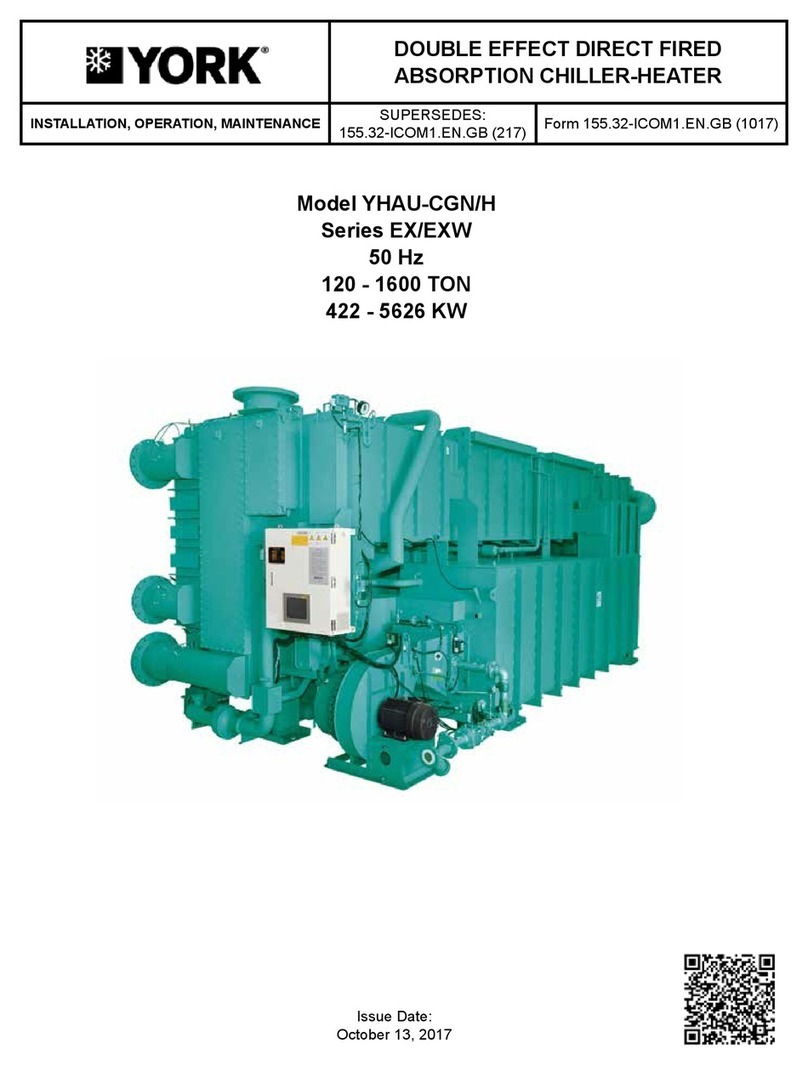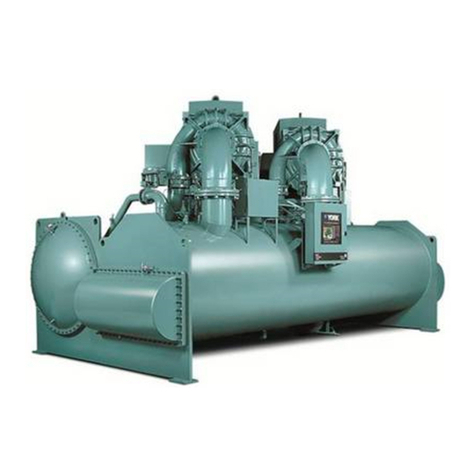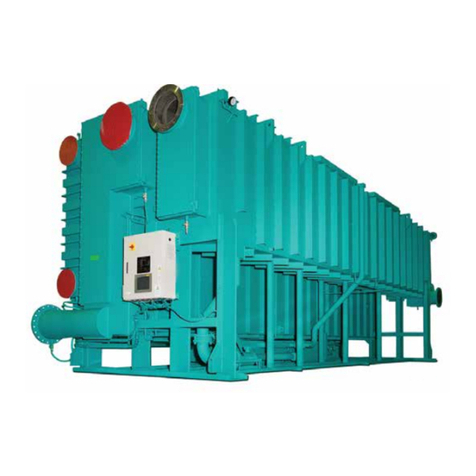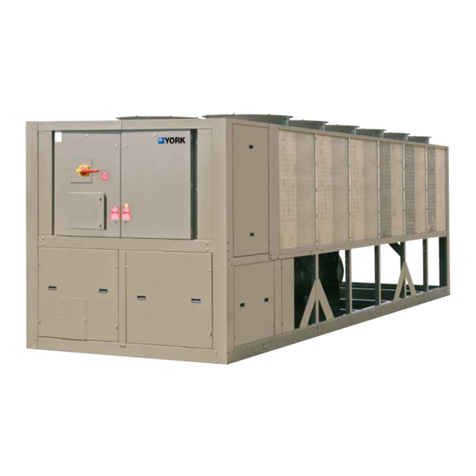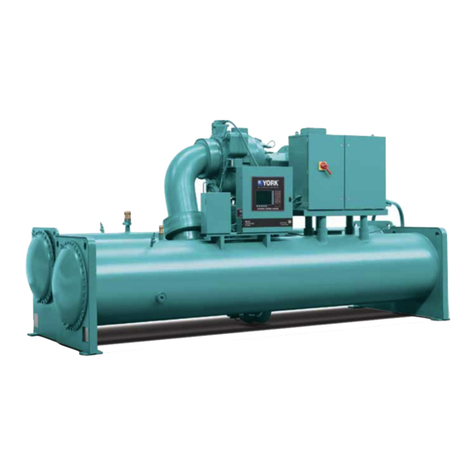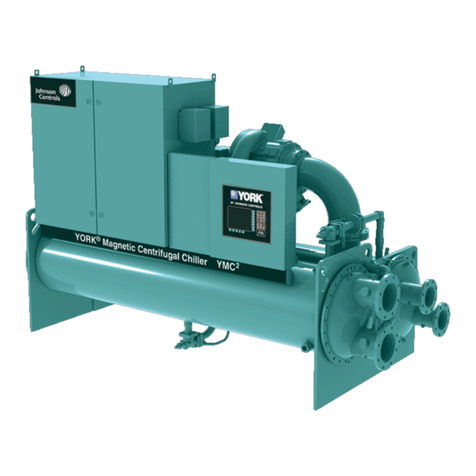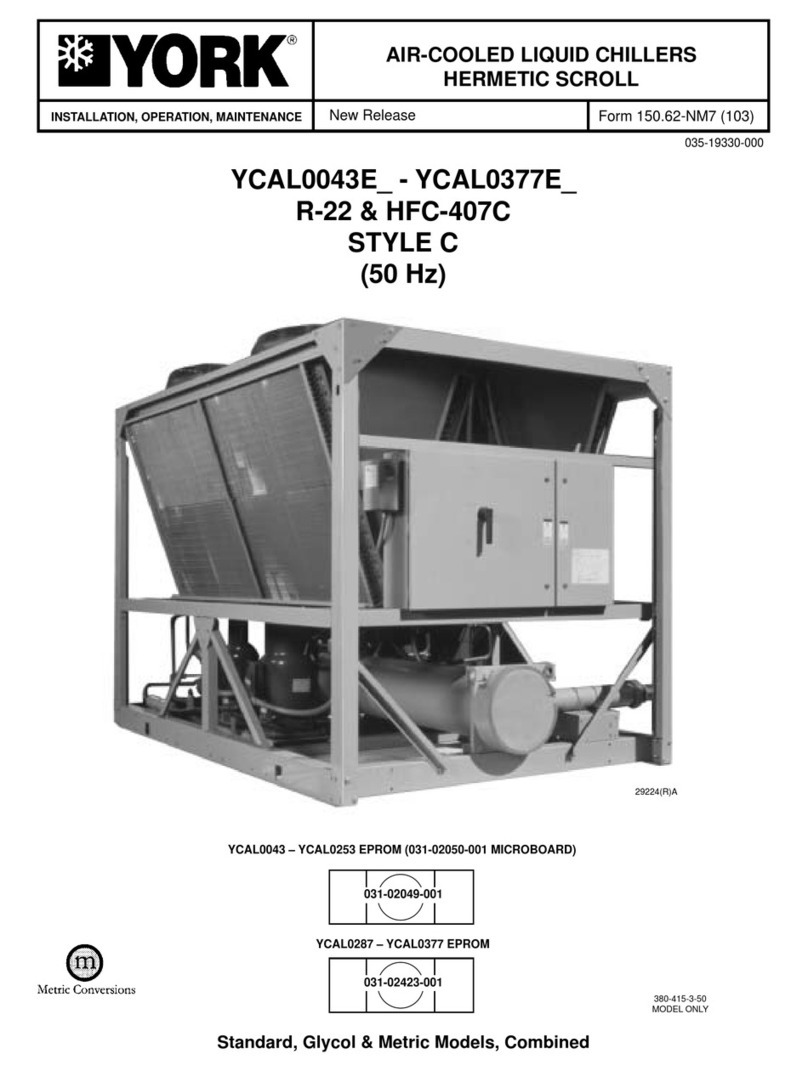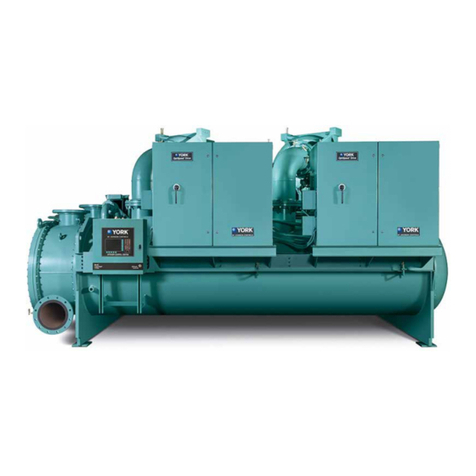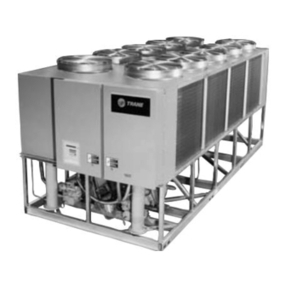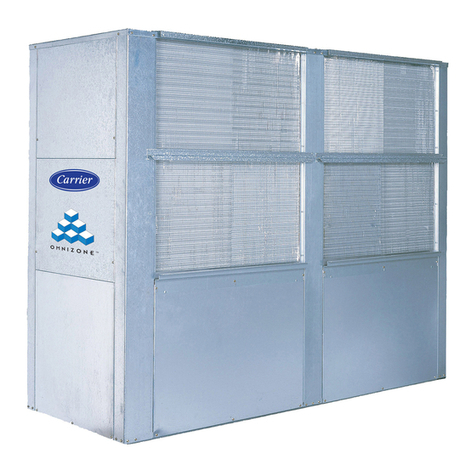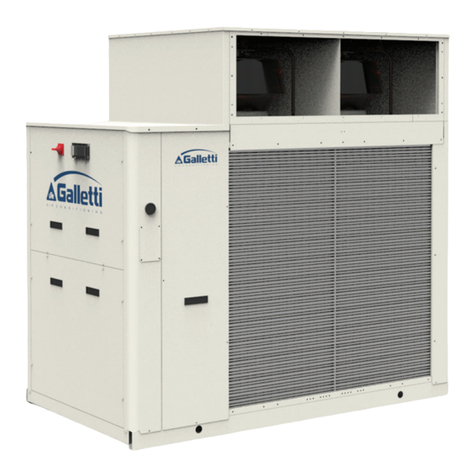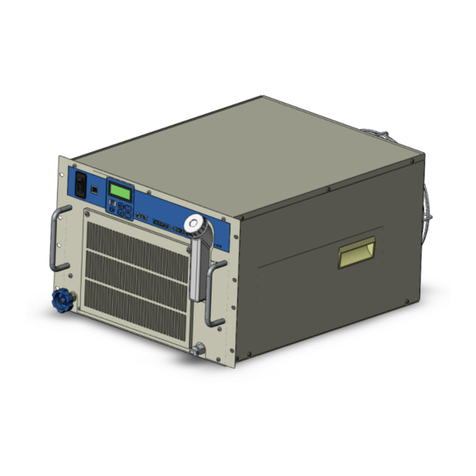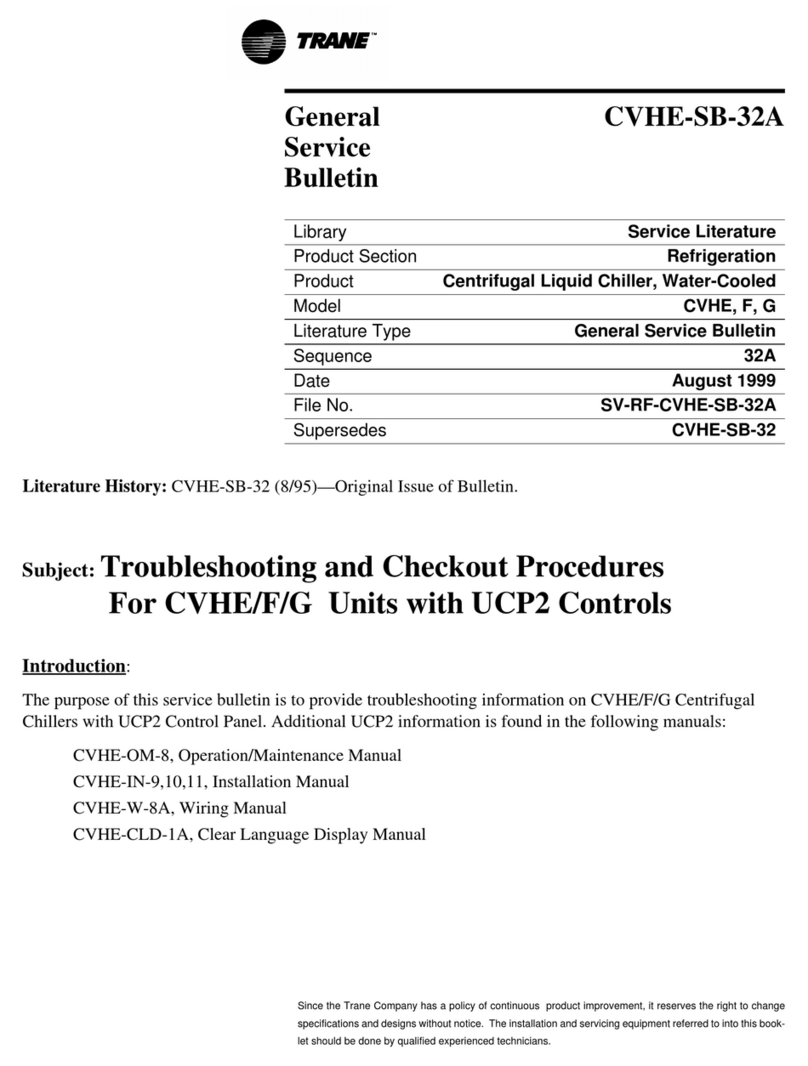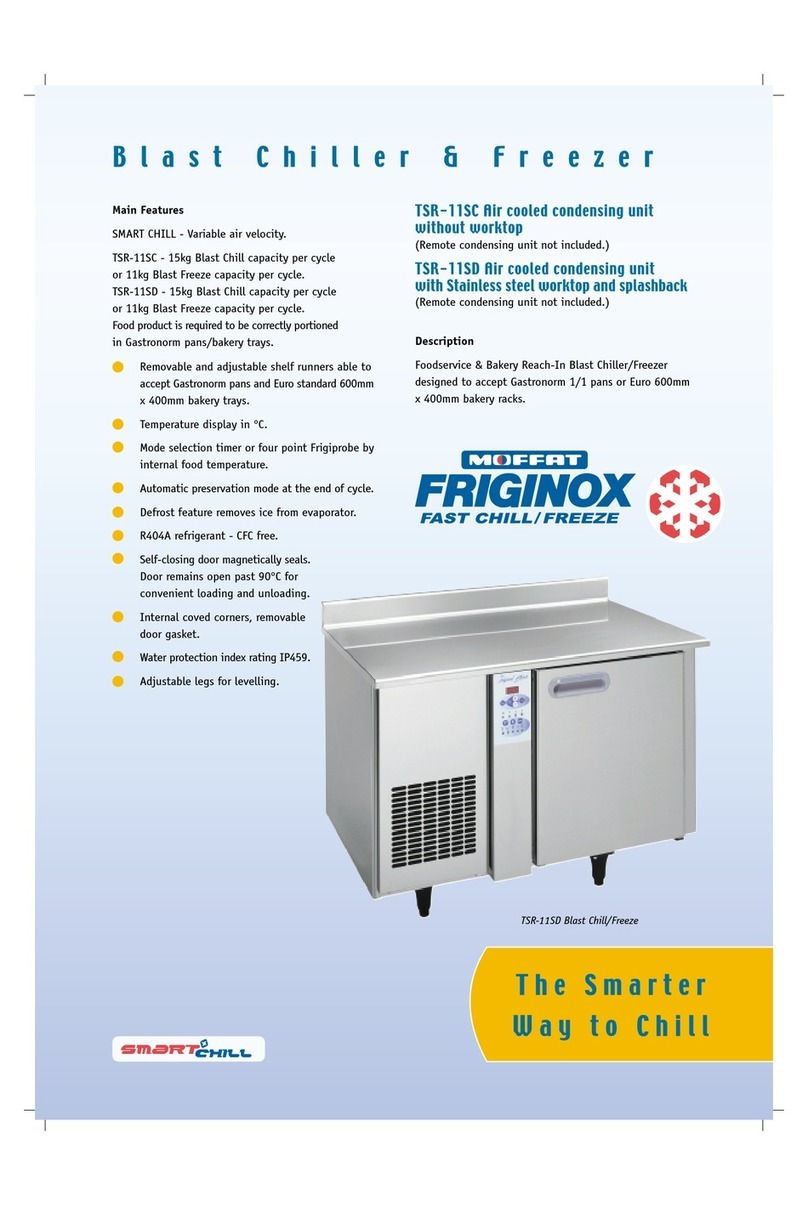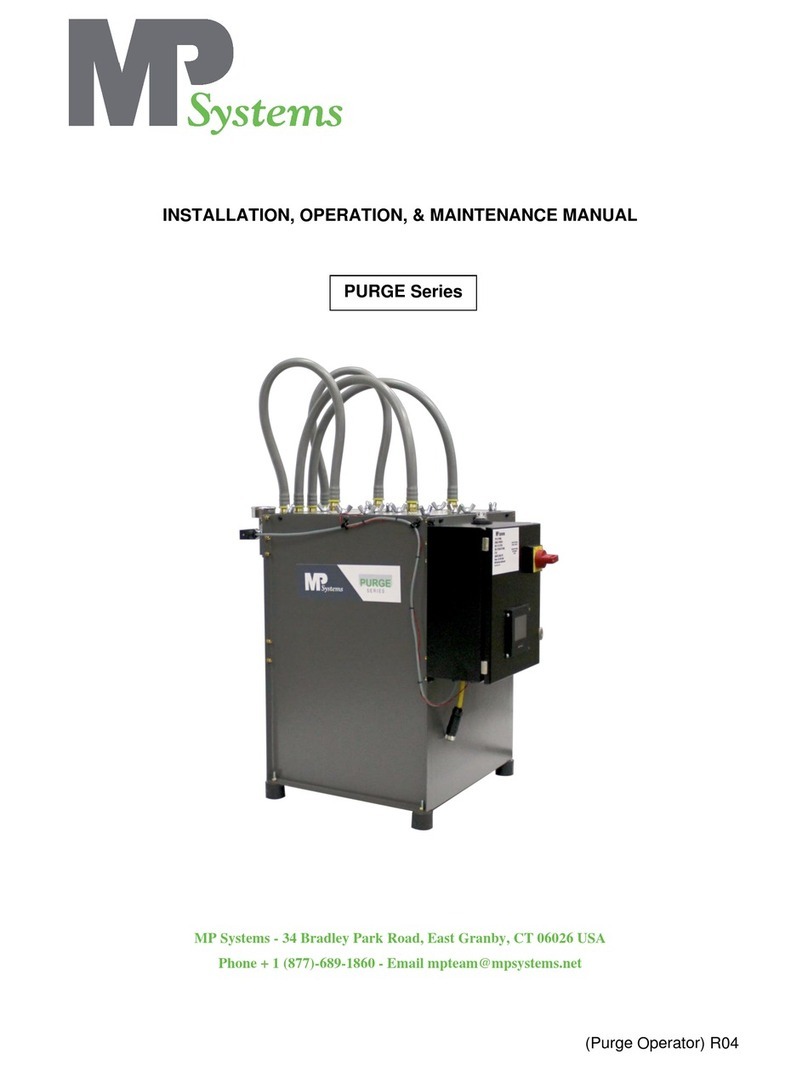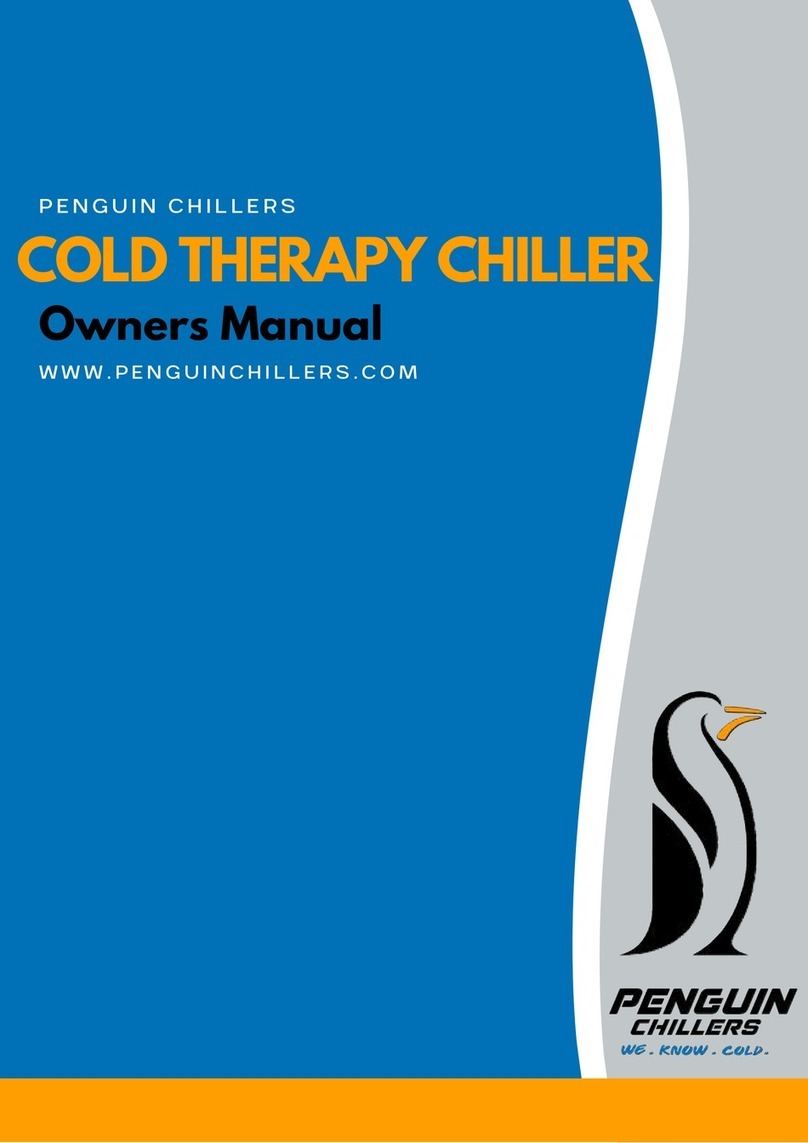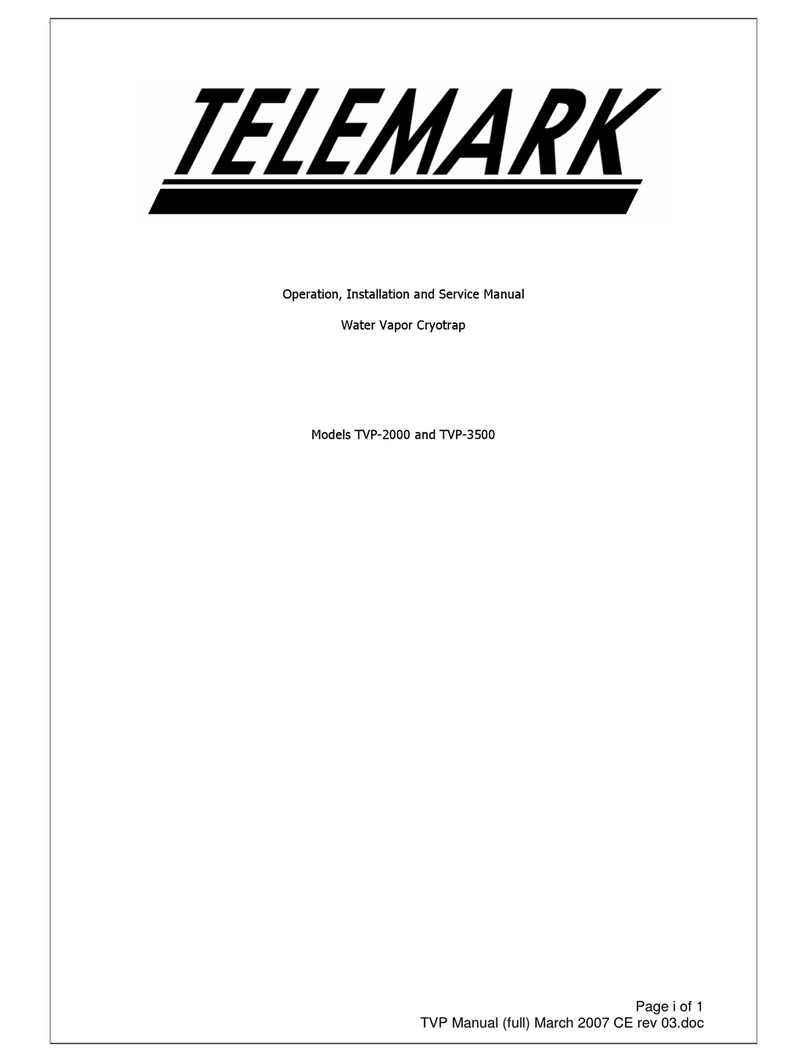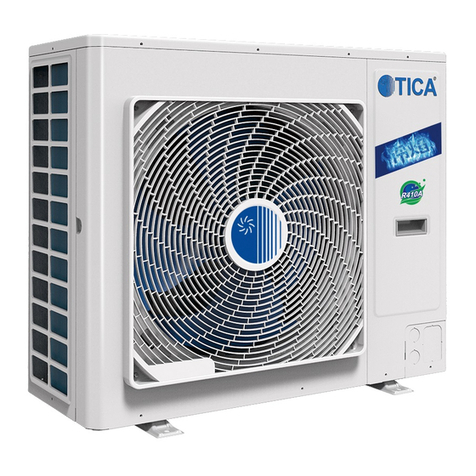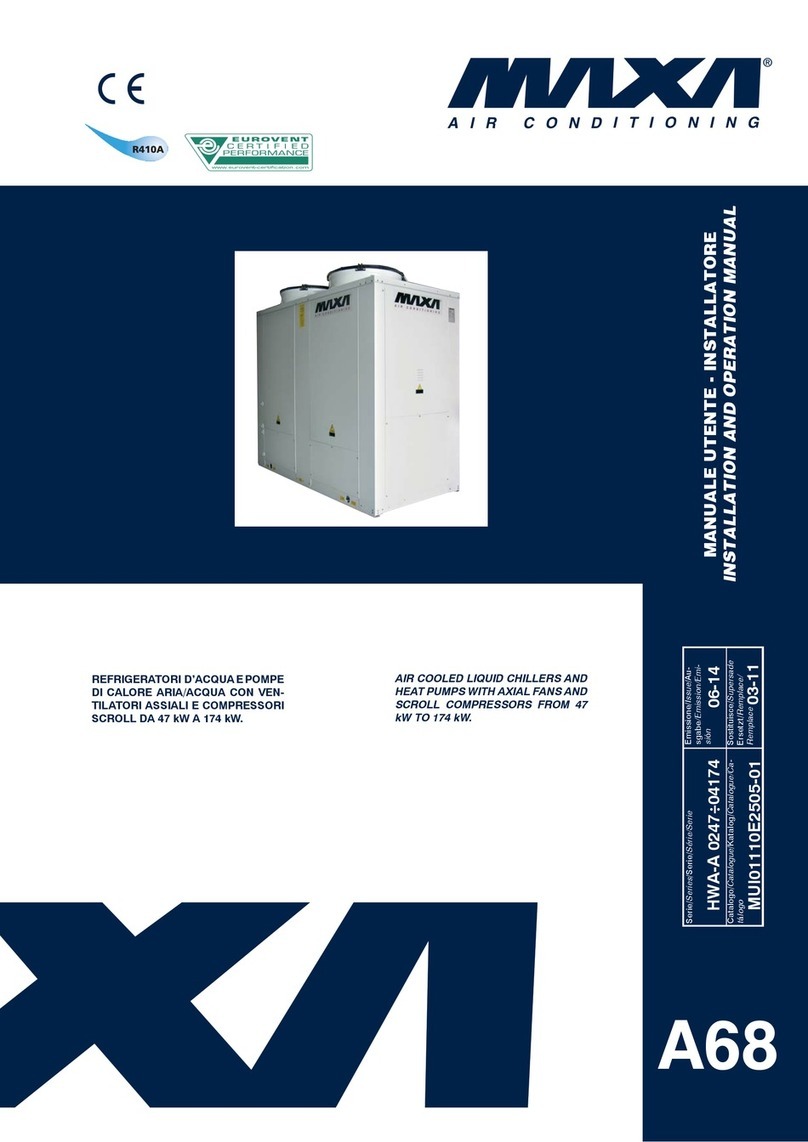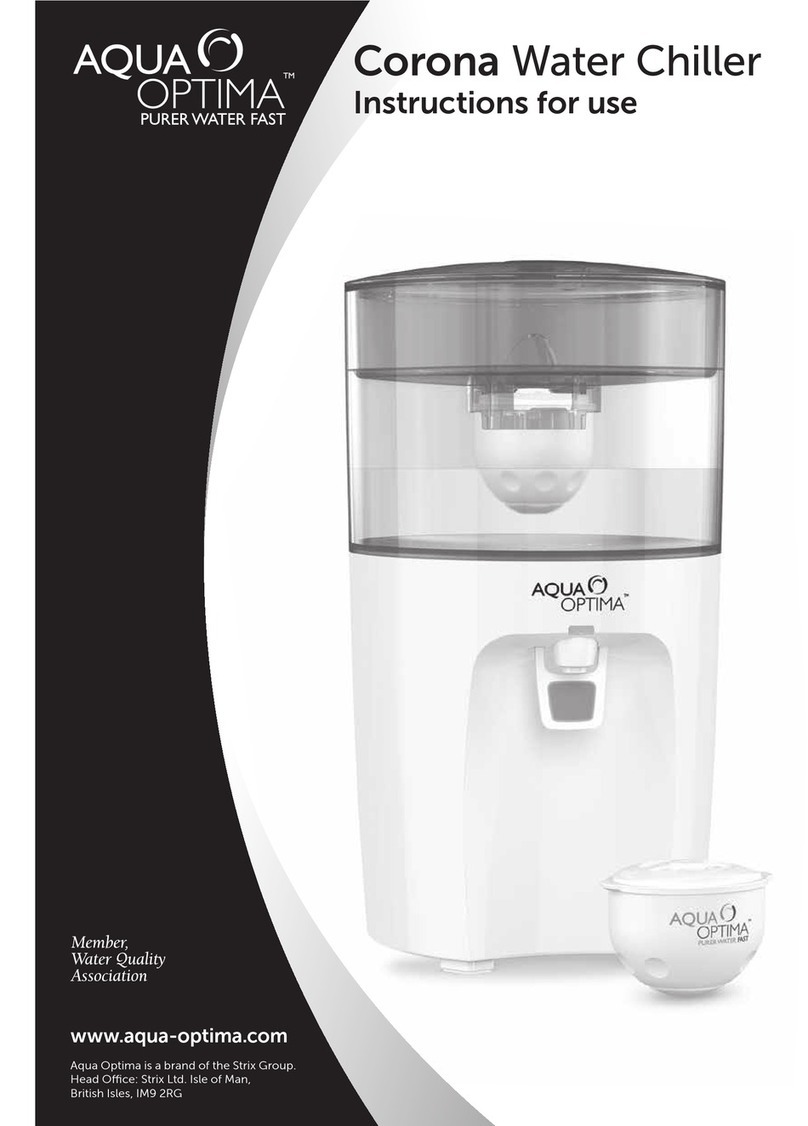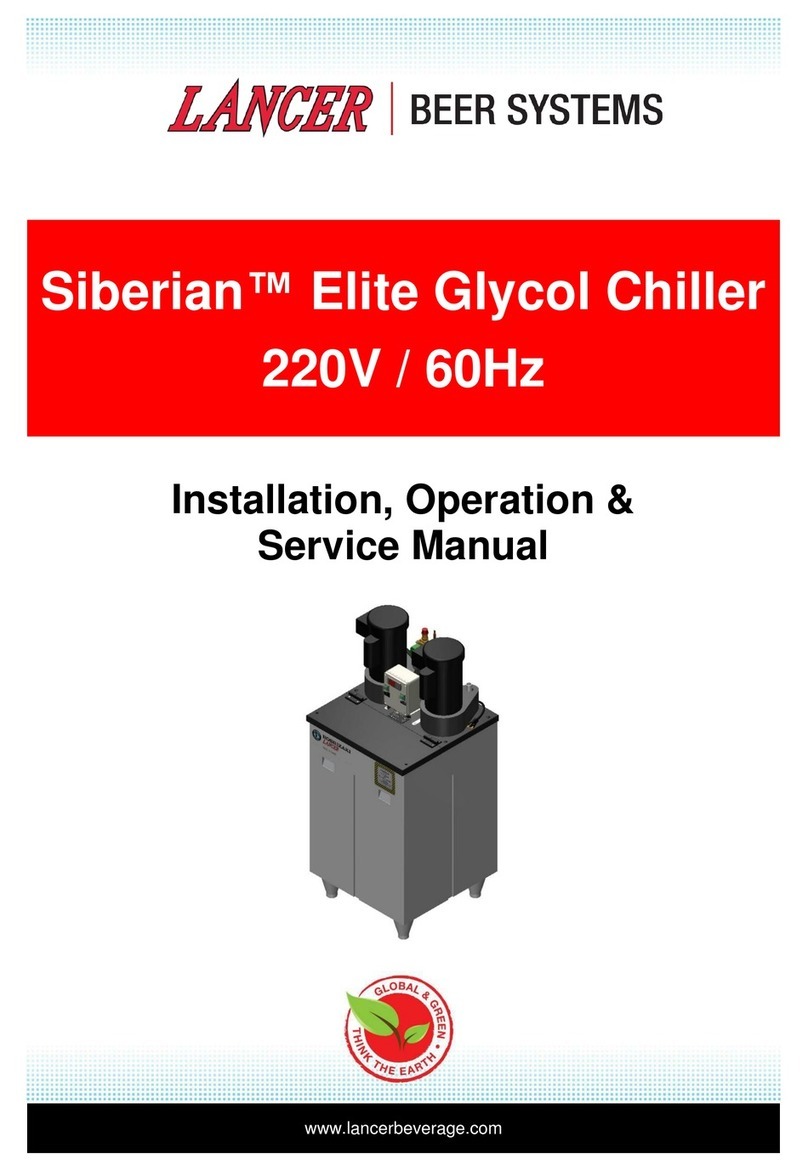
YORK INTERNATIONAL
10
FORM 160.54-M1(503)
System Architecture
SECTION 2
SYSTEM ARCHITECTURE
The OptiView Control Center performs the following
functions:
• Controls chiller capacity to chill liquid to the chilled
liquid temperature setpoint.
• Controls chiller solenoid valves, relays, actuators
and motor contactors per the operating program.
• Displays chiller operating conditions, alarms, shut-
down messages and history data.
• Accepts operator-programmed setpoints and con-
trols the chiller accordingly.
• Allows manual control of chiller motor contactors
and actuators.
• Monitors chiller operating conditions and shuts
down chiller when Safety or Cycling thresholds
are exceeded.
• Allows local manual start/stop and accepts start/
stop commands from remote devices, via contact
closures or serial communications.
• Allows setpoints to be changed from a remote lo-
cation via 0-10VDC, 2-10VDC, 0-20mA, 4-20mA,
contact closures or serial communications.
• Provides chiller operating data and status to remote
devices via serial communications and contact
closures.
• Allows real-time data and history data to be printed
on an optional printer.
• Controls the compressor motor starter and contains
a printed circuit board logic that supports Electro-
Mechanical Starters, Solid State Starters and YORK
Variable Speed Drive.
The OptiView Control Center is a microprocessor
based control system that receives analog, digital and
serial data inputs and controls analog, digital and serial
data outputs per instructions in the operating program.
A panel mounted display and touch-sensitive keypad
permit local operation.
System pressures are sensed by pressure transducers
The output of each transducer is a DC voltage that is
analogous to the pressure input. System temperatures are
sensed by thermistors. The output of each thermistor
is a DC voltage that is analogous to the temperature it
is sensing. Typical output voltage range of both is 0.5
to 4.5VDC. These are analog inputs to the OptiView
Control Center.
Digital Inputs are on/off inputs to the OptiView Control
Center in the form of switch and relay contacts. These
inputs are 115VAC when the contacts are closed and
0VAC when open. These include flow switches, local
start/stop switch, remote cycling and high pressure
safety device, etc.
Digital Outputs are on/off outputs from the OptiView
Control Center in the form of relay contacts and triacs.
The relay contacts typically switch 115VAC and the
triacs typically switch a nominal 30VAC. Relay outputs
include status/alarm, chiller solenoid valves, oil heater,
oil pump starter and chilled and condenser water pump
starters, etc. Triac outputs include pre-rotation vane
control and variable orifice control.
Serial Data is transmitted to and received from devices
in RS-232, RS-485 and TX/RX (opto-couple) form.
The OptiView Control Center supports three types of
starters; Electro-Mechanical Starter, Solid State Starter
and Variable Speed Drive. However, all OptiView Con-
trol Centers contain the following standard components,
regardless of the starter type applied:
• Microboard
• I/O (input/output) Board
• Keypad
• Display
• Power Supply
In addition to the standard components, the OptiView
Control Center contains a printed circuit board that
provides certain control and interface functions for the
starter type applied. Each starter type requires a different
board as follows:
• Electro-Mechanical Starter - CM-2 Current Mod-
ule
• Solid State Starter (Mod “A” only) - Logic Board
• Variable Speed Drive - Adaptive Capacity Control
Board
Figures 1 through 4 are OptiView Control Center block
diagrams of the three starter types. On each block di-
agram, the standard components are shown, along with
the printed circuit board that supports the applied starter
type. Figures 5 and 6 are Operation Sequence timing
diagrams of the different starter applications.
